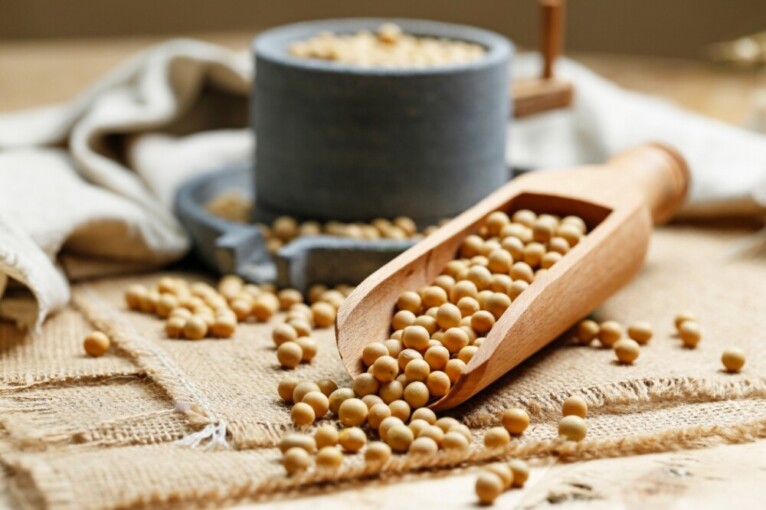
The spike in world soybean prices has surged the price of imported soybeans in Indonesia. According to the Dean of the Faculty of Agriculture UGM, Dr. Jamhari, S.P., M.P., the soybean import problem is a long-term problem that requires a long-term solution.
This solution, he explained, could be by developing local commodities to substitute soybeans as well as keeping the attempt to increase domestic soybean production.
“To make tempeh (traditional Indonesian fermented soybean product), it doesn’t have to be soybeans. There are other legumes such as jack beans which are quite good to develop in tropical areas like Indonesia to substitute imported soybeans,” he explained.
Jamhari explained soybean itself is a plant that naturally can produce optimally in subtropical areas. Thus, it is quite natural that the productivity of soybean in Indonesia is not as good as the major producing countries.
Several soybean varieties grown in Indonesia have somewhat high production potential, but so far, there is still a gap between potential and real production.
One of the causes of low soybean production in Indonesia, he explained, is the lack of agricultural land. The short-term solution to this problem is to integrate soybean farming with plantations and plantation forests.
“In general, Indonesia encounters a confined land area for food. This includes soybeans, whose production is by small farmers who lack land, not of big companies,” said Jamhari.
On the other hand, the development of a substituted product industry can be a long-term solution if it is taken seriously by related parties, including the government and industry players.
Varieties such as jack beans have not yet reached maximum productivity due to the lack of seriousness in developing imported soybeans substitutions from the mentioned parties. The spearhead of this effort should lie in those who have technological resources and the ability to develop agricultural products that are suitable for Indonesia’s climate.
With strong commitment, he is confident Indonesia will be able to overcome the dependence on imported soybeans.
“We can, but we have to commit to it. Like wheat, which is the raw material for noodles, it can be substituted for cassava flour, but we haven’t committed to this wholeheartedly,” he said.
From the policy side, the government can encourage the development of soybean substitutions through policies related to local content, for example requiring the use of 60 percent of local raw materials. Hence, the industry will look to substitute raw materials for soybeans that can be produced domestically.
Supply chain engineering is also required by grouping small farmers as suppliers in an established system.
“Small farmers should not be left alone. There must be an authority to lead this small economy,” he added.
Locally produced food consumption should be a campaign for the public to reduce the burden of food imports. Indonesia’s biodiversity, he explained, is not only to maintain and preserve but also to benefit as sustainable food resources.
As Indonesia is capable of producing various food resources, the consumption choices will also vary. To meet domestic needs, the maximum utilization of what nature provides is necessary.
“The consumption of Indonesians should be as diverse as what we can produce ourselves,” concluded Jamhari.
Author: Gloria

